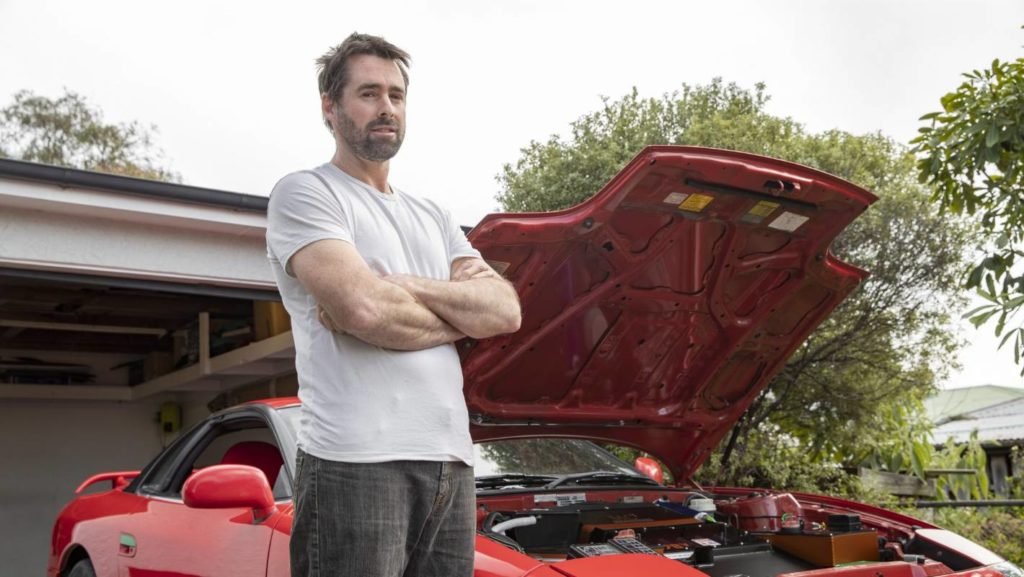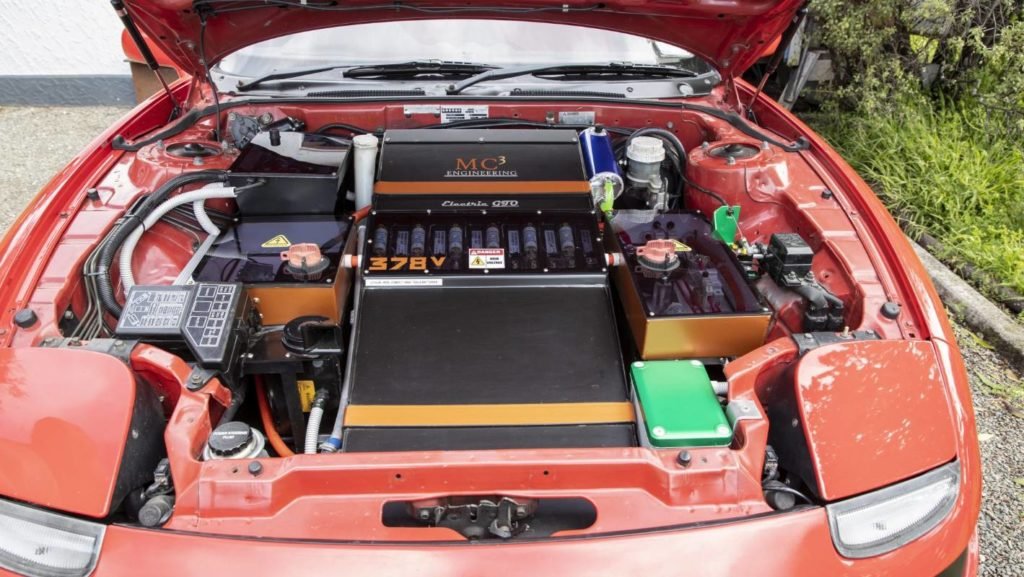Richmond engineer converting cars and public to electric vehicle potential
Richmond man Mat Coates is on a mission to add to the country’s electric vehicle fleet by converting older combustion models.
Mat Coates saw the potential of electric cars as a youngster messing around with remote-controlled vehicles.
“I’d always thought ‘why don’t we have electric cars on the road?’ It just seemed that the performance was great and at 12 I was already playing around with the batteries to see what I could do with them.”
Now the engineer has turned that interest into a quest to bring older fossil-fuelled cars into the EV revolution.
From his home garage in Richmond, Coates has spent the last two and a half years converting a 1992 Mitsubishi GTO to a fully electric model.
A machinist and toolmaker by trade, Coates works as a contract engineer for several local businesses while also working on his own MC3 Engineering brand.

Mat Coats has transformed a standard combustion engine 1992 Mitsubishi GTO into an electric vehicle.
After remote-controlled cars sparked his interest a trip to Germany racing electric go-karts with a friend at the Nürburgring circuit got him fired up.
“… we just got addicted to it – it was much more fun than a petrol go-kart and it just sounded awesome and accelerated well – I started looking into it and all the parts were available – albeit imported.”
Coates gleaned further inspiration from YouTube, overseas experts who were involved in conversion work, as well as friends associated with the Dunedin-based team that created the Mercury Energy car that featured on television commercials.
“I would have been still scratching my head for a lot longer in a few areas if it wasn’t for them.”
The converted GTO vehicle meets the criteria of the Low Volume Vehicle Technical Association (LVVTA), allowing Coates to use the project as his daily runabout.
But this is no Leaf. The quiet glide of the vehicle is apparent as you navigate the driveway, but once on the road the sound of the motor escalates into something not out of place in a Formula E car.
Gone from the original vehicle is the 3-litre V6 twin turbo engine, replaced by a Siemens 3-phase bus motor.
The original seats have also been replaced to accommodate the additional weight from the batteries. ” I looked at all your stereotypical boy racer cars and you can’t put that many batteries in them because the engines are so light and they end up over weight.”
“I ended up 70 kilograms lighter because I calculated that all of the weight in the drivetrain was going to be a lot more than what I was putting back into it .”

The GTO is powered by 12 lithium iron cobalt Tesla modules.
The battery bay contains 12 lithium iron cobalt Tesla modules, with 2p6s configuration, with a 378V capacity and an output of 40kWh, giving an approximate 180km range and taking six hours to charge on a normal house plug.
In the rear of the car, where the fuel tank once resided is a Scott Drive 100kW controller, which regulates the torque generated by EV motors by modifying the energy flow from the power sources to the motor.
Coates built his own gearbox, while the interior controls are remarkably simple with the driver able to shift between reverse and drive with just a flick of a toggle switch.
He estimated the whole process – from sourcing the GTO, removing the original mechanics, replacing it with the new tech and getting the vehicle certified for road use – cost around $35,000.
The batteries alone cost $15,000.It’s a serious investment but Coates said the prototype has opened his eyes to the potential of converting other vehicles.
With his first car finished and certified, and he is now building a 1968 VW Karmann Ghia for a client.
The long-term goal is to get more classic cars to convert, following on the trend which is gaining momentum in other parts of the world.
“I know New Zealand has a smaller population but there’s a lot of people wanting to do things a bit greener with transport – and it’s not just cars – there’s a whole lot of industrial, commercial stuff and farming equipment that could go this way – it’s just a matter of who wants to be leading the development.”

The converted vehicle has a 180-kilometre range.
Credit: Tim O’Connell, Stuff

This Post Has 0 Comments